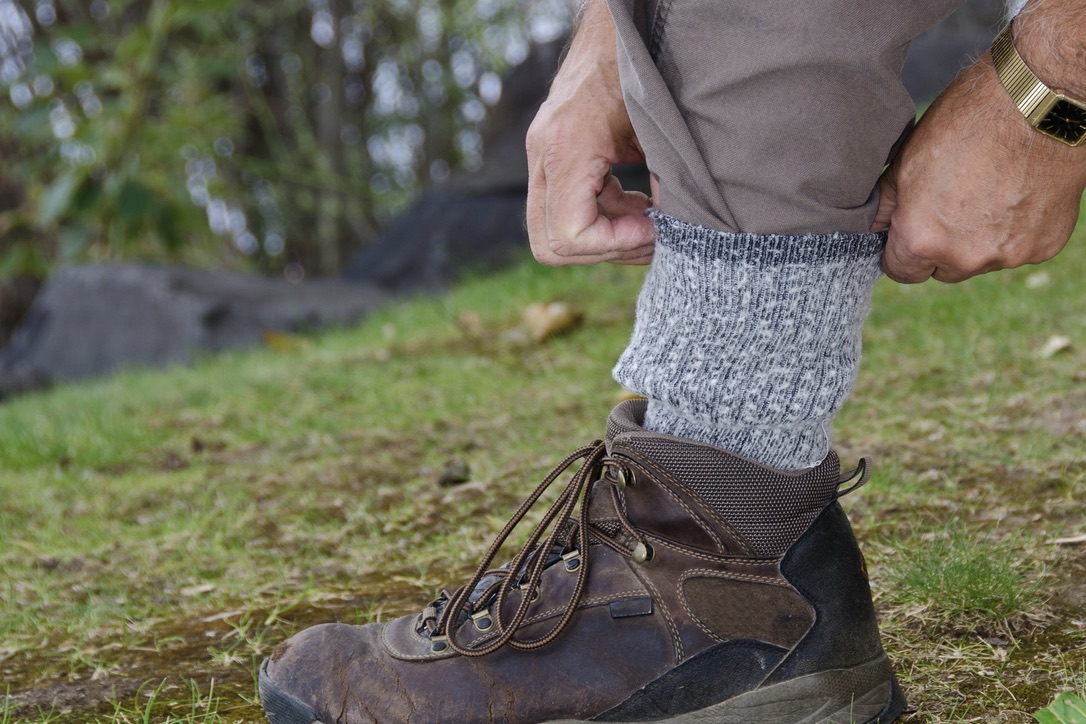Ticks and Alpha-gal Syndrome
What You Need to Know to Protect Yourself
If I already have alpha-gal syndrome, why do I need to avoid ticks?
If you have alpha-gal syndrome, it is important to avoid additional tick bites. If you are bitten again, your alpha-gal IgE levels can increase (9,12). If you aren’t bitten your alpha-gal IgE will likely decline over time and with luck, so will your reactivity (12 13). Ticks also transmit infectious diseases.
Tick Species Associated with Alpha-gal Syndrome (AGS)
Ticks associated with, or in some cases suspected of being associated with, the onset of alpha-gal syndrome include:
- In the U.S., the Lone Star Tick (Amblyomma americanum) appears to be the primary species associated with AGS (1).
- There is preliminary evidence from CDC studies that two Ixodes tick species may also cause AGS:
- There is a lack of data on whether other tick species found in the U.S. are associated with AGS. However, other species which may possibly be implicated include:
- In Europe, the Castor Bean Tick (Ixodes ricinus) (2) is thought to be the primary species associated with AGS.
- Other European ticks that may possibly be associated with AGS include:
- In Australia, the Australian Paralysis Tick (Ixodes holocyclus) (4) and Ixodes endopalpiger australiensis (5)
- In Central America, Amblyomma cajennense complex (6)
- In Japan, the Asian longhorned tick Haemaphysalis longicornis (8,51) and Amblyomma testudinarium (9)
- In Japan and Korea, possibly Ixodes nipponensis (7)
- In Brazil, possibly Amblyomma sculptum (7)†
- In the Ivory Coast, possibly Amblyomma variegatum (7)
- In South Africa, possibly Amblyomma hebraeum (15)
*Associated with AGS in Central America, but not yet associated with it in the U.S.
**Associated with AGS in Asia, but not yet known to be associated with it in the U.S.
*** Anecdotally associated with AGS in Minnesota and Wisconsin (19)
† Alpha-gal has been found in the saliva of Amblyomma sculptum (14).
Other Species
Ticks
- Alpha-gal-modified proteins have been found in the salivary glands of Hyalomma marginatum, Rhipicephalus bursa and cells of Rhipicephalus microplus (3), but we do not yet know if these species can induce AGS.
- It is likely that other species of ticks can also induce alpha-gal syndrome (10), but there is a lack of data on this.
- Differences in tick habitat, questing behavior, and/or anatomy play a role in determining which tick species are primary vectors of AGS (38)
Other Invertebrates
- There is speculation that chiggers (11) and mites (16) may be able to induce AGS, but this has not been convincingly documented.
- Limited data suggests that bee and wasp stings can cause a rise in alpha-gal IgE, but we don’t know if they can induce the initial alpha-gal IgE response (12).
- Preliminary data suggests that Ascaris lumbricoides (hookworms) may be able to elicit AGS (48).
- Fleas are another ectoparasite which may be associated with AGS, but again, data is preliminary (47).
- It’s possible that other ectoparasites or endoparasites can sensitize people to alpha-gal (1)(17), in some cases causing low levels of sensitizaton not high enough to produce clinical reactions (18).
Tick Report's Passive Surveillance Database
Visit Tick Report’s Passive Surveillance Database to learn about which species of ticks are found in your area.
TERC's Field Guide to Ticks
Visit TERC’s Field Guide to Ticks to learn about which tick species are currently active in your area.
Frequently Asked Questions about Ticks and Alpha-gal Syndrome
How Do Ticks Induce Alpha-gal Syndrome?
Ticks eject saliva into the bite sites they create in the skin. It’s thought that the saliva triggers an immune response that leads to alpha-gal syndrome (38). The mechanism by which this occurs is still being studied, but it’s believed that AGS is triggered by alpha-gal in ticks’ saliva, possibly in conjunction with adjuvants.
How Long Does a Tick Have to Feed to Trigger AGS?
According to alpha-gal syndrome expert Scott Commins, MD, PhD if a tick is attached long enough to cause an itchy reaction at the site of the bite, it was attached long enough to cause AGS.
It is not known how long this is, but it is possible that you are at risk as soon as they bite you and eject their saliva into your skin.
For this reason, prompt removal of ticks is not enough. It is important to avoid tick bites in the first place.
Do All People Who Are Bitten by Ticks Associated With AGS Get It?
No, most people who are bitten by ticks that can trigger AGS do not develop AGS. Even most people who become sensitived to alpha-gal after being bitten by a tick do not develop clinical alpha-gal syndrome (12).
What Other Illnesses Can I Get from Ticks?
If you are bitten by a tick, you might not just develop AGS. You might also acquire a tick-borne disease.
- Ticks transmit many diseases.
- Different tick species transmit different diseases.
- If you get AGS after a tick bite, don’t assume that all the symptoms you experience afterwards are caused by it.
- Talk to your doctor about ruling out tick-borne diseases and other illnesses which could be contributing to your symptoms.
- Learn more about North American tick-borne diseases and the species that transmit them from the CDC.
More Information

Lone star ticks→

Avoiding Tick Bites→

What to Do If You Are Bitten by a Tick→

Ticks and Pets→
References
1. Commins SP, James HR, Kelly LA, Pochan SL, Workman LJ, Perzanowski MS, Kocan KM, Fahy JV, Nganga LW, Ronmark E, Cooper PJ. The relevance of tick bites to the production of IgE antibodies to the mammalian oligosaccharide galactose-α-1, 3-galactose. Journal of Allergy and Clinical Immunology. 2011 May 1;127(5):1286-93.
2. Hamsten C, Starkhammar M, Tran TA, Johansson M, Bengtsson U, Ahlen G, Sällberg M, Grönlund H, van Hage M. Identification of galactose‐α‐1, 3‐galactose in the gastrointestinal tract of the tick I xodes ricinus; possible relationship with red meat allergy. Allergy. 2013 Apr;68(4):549-52.
3. Mateos-Hernández L, Villar M, Moral A, GarcíaRodríguez C, Arias TA, de la Osa V, Brito FF, de Mera IG, Alberdi P, Ruiz-Fons F, Cabezas-Cruz A. Tick-host conflict: immunoglobulin E antibodies to tick proteins in patients with anaphylaxis to tick bite. Oncotarget. 2017 Mar 28;8(13):20630.
4. van Nunen S, O’Connor K, Fernando S, Clarke L, Boyle R. THE ASSOCIATION BETWEEN IXODES HOLOCYCLUS TICK BITE REACTIONS AND RED MEAT ALLERGY: P17. Internal Medicine Journal. 2007 Nov 1;37.
5. Kwak M, Somerville C, van Nunen S. A novel Australian tick Ixodes (Endopalpiger) australiensis inducing mammalian meat allergy after tick bite. Asia Pacific Allergy. 2018 Jul 23;8(3).
6. Wickner PG, Commins SP. The first 4 Central American cases of delayed meat allergy with galactose-alpha-1, 3-galactose positivity clustered among field biologists in Panama. Journal of Allergy and Clinical Immunology. 2014 Feb 1;133(2):AB212..
7. van Nunen SA. Tick‐induced allergies: mammalian meat allergy and tick anaphylaxis. Medical Journal of Australia. 2018 Apr;208(7):316-21.
8. Chinuki Y, Ishiwata K, Yamaji K, Takahashi H, Morita E. Haemaphysalis longicornis tick bites are a possible cause of red meat allergy in Japan. Allergy. 2016 Mar;71(3):421-5.
9. Hashizume H, Fujiyama T, Umayahara T, Kageyama R, Walls AF, Satoh T. Repeated Amblyomma testudinarium tick bites are associated with increased galactose-α-1, 3-galactose carbohydrate IgE antibody levels: a retrospective cohort study in a single institution. Journal of the American Academy of Dermatology. 2018 Jun 1;78(6):1135-41.
10. Crispell G, Commins SP, Archer-Hartman SA, Choudhary S, Dharmarajan G, Azadi P, Karim S. Discovery of alpha-gal-containing antigens in North American tick species believed to induce red meat allergy. Frontiers in immunology. 2019 May 17;10:1056.
11. Stoltz LP, Cristiano LM, Dowling AP, Wilson JM, Platts-Mills TA, Traister RS. Could chiggers be contributing to the prevalence of galactose-alpha-1, 3-galactose sensitization and mammalian meat allergy?. The journal of allergy and clinical immunology. In practice. 2019 Feb;7(2):664.
12. Commins SP. Diagnosis & management of Alpha-gal Syndrome: Lessons from 2,500 patients. Expert Review of Clinical Immunology. 2020 Jun 25. Forthcoming.
13. Kim MS, Straesser MD, Keshavarz B, Workman L, McGowan EC, Platts-Mills TA, Wilson JM. IgE to galactose-α-1, 3-galactose wanes over time in patients who avoid tick bites. The Journal of Allergy and Clinical Immunology: In Practice. 2020 Jan 1;8(1):364-7.
14. Araujo RN, Franco PF, Rodrigues H, et al. Amblyomma sculptum tick saliva: alpha‐Gal identification, antibody response and possible association with red meat allergy in Brazil. Int J Parasitol. 2016;46(3):213‐220.
15. Levin, M. 2019. Alpha-gal: a Fascinating Story. Presidential Plenary. ACAAI Annual Meeting.
16. Ohshita N, Ichimaru Y, Gamoh S, Tsuji K, Kishimoto N, Tsutsumi YM, Momota Y. Management of infusion reactions associated with cetuximab treatment: A case report. Molecular and Clinical Oncology. 2017 Jun 1;6(6):853-5.
17. Arkestål K, Sibanda E, Thors C, Troye-Blomberg M, Mduluza T, Valenta R, Grönlund H, van Hage M. Impaired allergy diagnostics among parasite-infected patients caused by IgE antibodies to the carbohydrate epitope galactose-α1, 3-galactose. Journal of Allergy and Clinical Immunology. 2011 Apr 1;127(4):1024-8.
18. Levin M, Apostolovic D, Biedermann T, Commins SP, Iweala OI, Platts-Mills TA, Savi E, van Hage M, Wilson JM. Galactose α-1, 3-galactose phenotypes: Lessons from various patient populations. Annals of Allergy, Asthma & Immunology. 2019 Jun 1;122(6):598-602.
19. 6. Platts-Mills TA, Li RC, Keshavarz B, Smith AR, Wilson JM. Diagnosis and management of patients with the α-Gal syndrome. The Journal of Allergy and Clinical Immunology: In Practice. 2020 Jan 1;8(1):15-23.
20. I-TICK Surveillance. Retrieved from: https://twitter.com/ITickUIUC/status/1282799807996854278
21. Bickerton M, Toledo A. Multiple pruritic tick bites by Asian Longhorned tick larvae (Haemaphysalis longicornis). International Journal of Acarology. 2020 Aug 12:1-4.
22. Molaei, G. et al. “Bracing for the Worst — Range Expansion of the Lone Star Tick in the Northeastern United States.” (2019). N Engl J Med; 381:2189-2192
23. Monzón, J. D., et al. (2016). “Population and Evolutionary Genomics of Amblyomma americanum, an Expanding Arthropod Disease Vector.” Genome Biology and Evolution 8(5): 1351-1360.
24. Raghavan RK, et al. Peterson AT, Cobos ME, Ganta R, Foley D (2019). Current and Future Distribution of the Lone Star Tick, Amblyomma americanum (L.) (Acari: Ixodidae) in North America. PLOS ONE 14(1): e0209082.
35. Lone Star Ticks in New Jersey: Risk, Ecology, and Prevention. Rutgers New Jersey Agricultural Experiment Station.
36. Paddock CD, Yabsley MJ. Ecological havoc, the rise of white-tailed deer, and the emergence of Amblyomma americanum-associated zoonoses in the United States. InWildlife and emerging zoonotic diseases: the biology, circumstances and consequences of cross-species transmission 2007 (pp. 289-324). Springer, Berlin, Heidelberg.
37. Scott Norton, MD. Personal communication.
38. Platts-Mills TA, Commins SP, Biedermann T, van Hage M, Levin M, Beck LA, Diuk-Wasser M, Jappe U, Apostolovic D, Minnicozzi M, Plaut M. On the cause and consequences of IgE to galactose-α-1, 3-galactose: a Report from the National Institute of Allergy and Infectious Disease Workshop on Understanding IgE-Mediated Mammalian Meat Allergy. Journal of Allergy and Clinical Immunology. 2020 Feb 10.
39. Springer YP, Jarnevich CS, Barnett DT, Monaghan AJ, Eisen RJ. Modeling the present and future geographic distribution of the lone star tick, Amblyomma americanum (Ixodida: Ixodidae), in the continental United States. The American journal of tropical medicine and hygiene. 2015 Oct 7;93(4):875-90.
40. Sonenshine DE. Range expansion of tick disease vectors in North America: implications for spread of tick-borne disease. International journal of environmental research and public health. 2018 Mar;15(3):478.
41. Woodson MM. Retrieved from: The low-down on ticks. Part 1A, Biology Q&A. NY State IPM Progeam. Cornell University. 2018 June.
42. CDC Ticks
43. University of Rhode Island Tick Encounter Resource Center
44. “lone star tick – Amblyomma americanum (Linnaeus)”. entnemdept.ufl.edu.
45. Tick-Borne Infections of North Carolina, Inc.
46. Valcárcel F, Elhachimi L, Vilá M, et al. Emerging Hyalomma lusitanicum: From identification to vectorial role and integrated control. Med Vet Entomol. Published online May 5, 2023. doi:10.1111/mve.12660
47. Stenger F, Seidel P, Schricker T, Volc S, Fischer J. Could cat flea bites contribute to alpha-gal serum IgE levels in humans? J Investig Allergol Clin Immunol. Published online January 24, 2022:0.
48. Murangi T, Prakash P, Moreira BP, et al. Ascaris lumbricoides and ticks associated with sensitization to galactose α1,3-galactose and elicitation of the alpha-gal syndrome. J Allergy Clin Immunol. 2022;149(2):698-707.e3.
49. Childs JE, Paddock CD. The ascendancy of Amblyomma americanum as a vector of pathogens affecting humans in the United States. Annu Rev Entomol. 2003;48:307-337.
50. White A, Gaff H. Review: Application of Tick Control Technologies for Blacklegged, Lone Star, and American Dog Ticks. J Integr Pest Manag. 2018;9(1):12.
51. Kondo M, Yamanaka K, Mizutani H. 575 Rapid changes in the red meat and α-Gal specific IgE-RAST level profile in the clinical course of a case with red meat allergy and Haemaphysalis longicornis bite. J Invest Dermatol. Published online 2017.
52. Valcárcel Á, Montero AB, Rodero M, et al. Alpha-Gal, epitope responsible for allergy to red meat, in the Mediterranean tick Hyalomma lusitanicum. Med Vet Entomol. Published online May 13, 2024. doi:10.1111/mve.12724
53. Saunders EF, Sohail H, Myles DJ, Charnetzky D, Ayres BN, Nicholson WL, Commins SP, Salzer JS. Alpha-Gal Syndrome after Ixodes scapularis Tick Bite and Statewide Surveillance, Maine, USA, 2014-2023. Emerging infectious diseases. 2025 Apr;31(4):809-13.
54. Butler WK, Oltean HN, Dykstra EA, Saunders E, Salzer JS, Commins SP. Onset of Alpha-Gal Syndrome after Tick Bite, Washington, USA. Emerging infectious diseases. 2025 Apr;31(4):829-32.
All the information on alphagalinformation.org is provided in good faith, but we, the creators and authors of the Alpha-gal Information website offer no representation or warranty, explicit or implied, of the accuracy, adequacy, validity, reliability, availability, or completeness of any information on this site. Under no circumstances should we have any liability for any loss or damage incurred by you as a result of relying on information provided here. We are not physicians or medical professionals, researchers, or experts of any kind. Information provided in this website may contain errors and should be confirmed by a physician. Information provided here is not medical advice. It should not be relied upon for decisions about diagnosis, treatment, diet, food choice, nutrition, or any other health or medical decisions. For advice about health or medical decisions including, but not limited to, diagnosis, treatment, diet, and health care consult a physician.
READ FULL DISCLAIMER>
